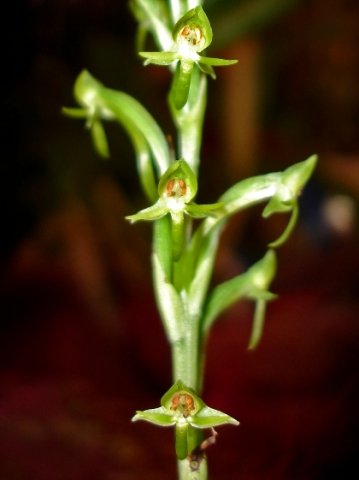Habenaria arenaria flowers

Author: Ivan Lätti
Photographer: Judd Kirkel Welwitch
The small green flowers of Habenaria arenaria grow, from few to many of them, in a lax raceme. They are thought to be unscented. Acutely pointed, lance-shaped bracts, up to 1,8 cm long, are found below each flower pedicel. This pedicel becomes up to 8 mm long, the ovary in its upper end curved, slightly longer than 1 cm.
The median sepal is erect, the lateral ones deflexed, obliquely ovate with acutely pointed tips; the median sepal becomes up to 4 mm long, the laterals 5 mm. The lateral petals are ovate to lanceolate, curving and tapering to acutely pointed tips, greener in the photo than the sepals behind them.
The lip has three lobes. The lateral ones spread sideways, the midlobe, narrowly oblong and green, protrudes slightly forward and strongly downwards. A nectar-producing spur of 1,5 cm grows below the back end of the lip. It becomes much longer than the lip, up to 2 cm long. The spur has a tooth upon its surface and is slightly inflated near its tip that tapers.
Flowering happens in two phases, from mid-spring to early summer, then again in mid-autumn to midwinter (Liltved and Johnson, 2012; Pooley, 1998).

